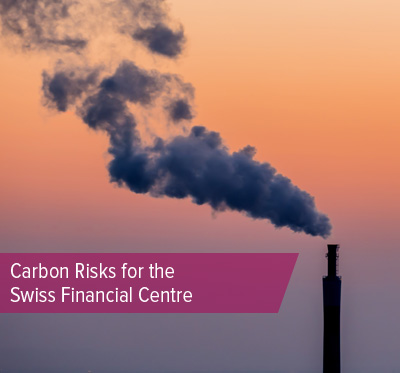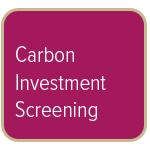Carbon Risks for the
Swiss Financial Centre.
October 2015
Switzerland is one of the leading financial centres in the world and is heavily focused on asset management. In fact, every ninth Swiss franc of Switzerland’s GDP is generated in its financial sector. Recently, more and more investors, researchers, governments and international non-governmental organisations (NGOs) are realising that investments in companies that produce a high amount of CO2 or promote fossil energies are fraught with risk. The harder we strive to meet the so-called 2-degree climate target, which was set by the international community as the critical climate policy target value based on the scenarios of the Intergovernmental Panel on Climate Change (IPCC), the greater the potential losses for investors.
This study provides a full analysis of these risks for Switzerland. It reveals:
- In which CO2-intensive companies the Swiss equity market is globally invested;
- How high the financed greenhouse gases are when investors use passive, index-orientated investment strategies;
- How many greenhouse gasses the Swiss equity fund market accounts for annually (including an excursus on Swiss pension funds);
- How high the potential costs and risks of investing in CO2-intensive sectors are for financial intermediaries, pension funds and the Swiss economy;
- What actions investors and policymakers can take.
This study provides a detailed analysis of approximately 280 billion Swiss francs (CHF) of investments – this corresponds to 80% of the entire equity fund market in Switzerland as of 31 December 2014. The CHF 280 billion are invested in the 100 largest equity investment funds licensed for distribution in Switzerland and the equity funds of system-relevant banks. In addition, CHF 33.2 billion in foreign equity mandates of 11 of the 25 largest pension funds, who revealed their investment universe for the first time ever so that the carbon exposure of their investments could be screened for this study, was analysed for an excursus.
The portfolios were assessed based on the concept of financed greenhouse gas emissions. This means that climate impacts were allocated proportionately to the share of ownership in a company as of 31 December 2014. The research partners had access to the world’s largest data analysis of the greenhouse gas emissions of over 40,000 listed companies. In total, 179 individual carbon exposure analyses were performed on the investments.
is now available. Please see below to access the reports.
(Please note: The Executive Summary Report is available in English, German & French)
(Please note: The Full Report is only available in German)
To access or download a .pdf-version of this document, please click here (1MB) for English, here for German, and here for French.
Those documents as well as further documentation is also available on the dedicated website of the Swiss Federal Office for the Environment (BAFU/FOEN).
if you have any further questions, please do not hesitate to contact us.
To access or download a .pdf-version of this document, please click here (2MB) for German.
Those documents as well as further documentation is also available on the dedicated website of the Swiss Federal Office for the Environment (BAFU/FOEN).
if you have any further questions, please do not hesitate to contact us.



